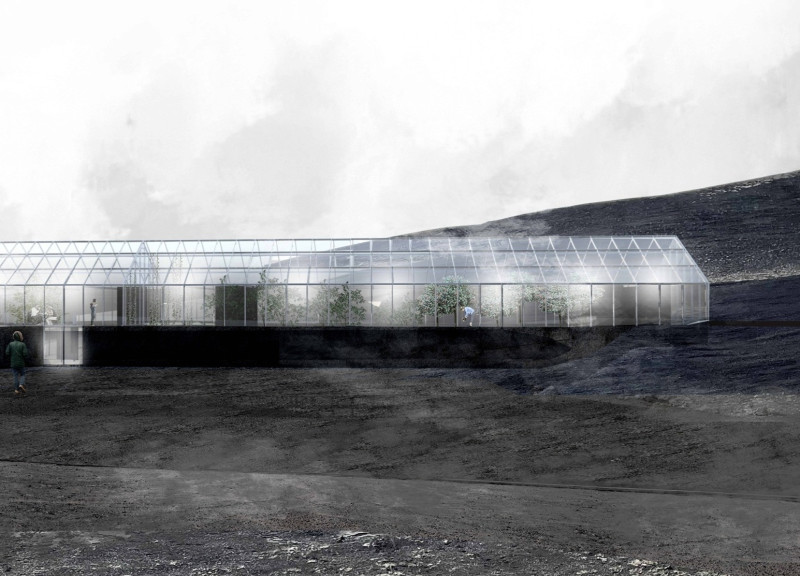5 key facts about this project
This architectural endeavor represents a thoughtful response to the unique characteristics of its location. The design philosophy is based on the concept of "Following the Terrain," allowing the building to harmonize with the natural topography rather than imposing on it. This approach fosters a sense of belonging and respect for the environment, making it a model of sustainable architecture that is sensitive to its context. The primary feature is a spacious main hall that serves as a gathering space, flanked by the greenhouse and dining areas that offer sweeping views of the surrounding landscape, including the volcanic formations and the majestic Myvatn Nature Baths.
The layout of the project consists of several meticulously designed components. The greenhouse is designed to maximize sunlight capture, utilizing extensive glass panels to create an inviting and nurturing atmosphere for both diners and the plants cultivated within. This feature not only supports the aesthetic appeal but also enhances the overall functionality of the space by ensuring a bright environment that promotes growth and vitality. The restaurant space is thoughtfully situated at a lower elevation, allowing patrons to experience the beauty of the vistas while enjoying their meal.
In terms of materials, the project utilizes local pumice, which is both structurally sound and environmentally friendly, resonating with the volcanic context of the site. The incorporation of pumice in the structural walls provides insulation properties that contribute to the building's energy efficiency. The visual language of the design is further enhanced by the use of a steel framework that supports the expansive glass facades, creating a balance between transparency and structural integrity. Wood elements are introduced throughout the interior spaces, adding warmth and comfort to the dining areas, and further emphasizing the connection to nature.
One of the standout aspects of this project is its commitment to sustainability and education. Aside from providing a unique dining experience, the greenhouse functions as a platform for educating visitors about local agriculture, seasonal produce, and the impact of sustainable practices on the environment. This dual purpose enriches the overall experience for visitors, making the restaurant not only a place to eat but also a place to learn and connect with the region's ecological values.
The project's architectural designs showcase innovative ideas that reflect a modern sensibility while remaining grounded in traditional concepts of place-making. The seamless integration of indoor and outdoor spaces invites guests to engage with the environment actively, fostering a deeper appreciation for the landscape. This attention to detail is evident in the thoughtful arrangement of the internal spaces, which encourages movement and exploration, ensuring that each visit feels unique.
The greenhouse restaurant exemplifies an architectural response that is both practical and visionary, framing a stark yet beautiful landscape that is characteristic of Iceland. It stands as a testament to contemporary architectural practices that honor the environment while catering to modern culinary experiences. Readers interested in a deeper understanding of this project are encouraged to explore the architectural plans, sections, and various design elements that demonstrate how this project encapsulates innovative architectural ideas within a sustainable framework.


























